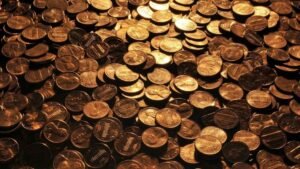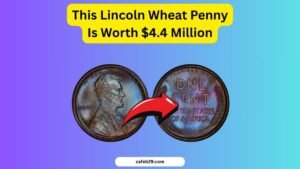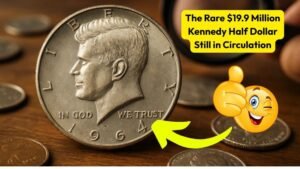Imagine holding a tiny coin that looks ordinary, yet it could fetch you $1.9 million. The Lincoln Wheat Penny is one of the most mysterious and sought-after treasures in the world of numismatics, and its story is nothing short of legendary.
What Exactly Is the Lincoln Wheat Penny?
The Lincoln Wheat Penny, first minted in 1909, may look like the common change you find in your pocket, but some rare editions are worth millions. It features Abraham Lincoln on the obverse and two stalks of wheat on the reverse — a design symbolizing prosperity. What makes it so fascinating is that a few misprints and minting errors transformed this everyday coin into a millionaire-maker.
The History Behind the Coin
The penny was introduced in 1909 to commemorate Lincoln’s 100th birthday. For collectors, certain versions like the 1909-S VDB or the 1943 bronze wheat penny hold mythical status. During World War II, pennies were struck in steel to save copper for the war effort. But a handful of copper planchets slipped through in 1943, creating one of the rarest coins in U.S. history — one of which later sold for nearly $1.9 million at auction.
Why Is It Worth $1.9 Million?
Value in coins comes from rarity, demand, and condition. The 1943 bronze Lincoln penny checks all three boxes. Only a few exist, most tucked away in private collections. Auction houses report bidding wars that push prices into the millions. To collectors, owning one isn’t just about money — it’s about holding a piece of history.
What Drives the Value of a Lincoln Wheat Penny
| Factor | Why It Matters |
|---|---|
| Rarity | Only a few were minted in error |
| Condition (Grade) | Mint state coins sell for the highest price |
| Historical Era | WWII shortages make 1943 bronze unique |
| Collector Demand | Numismatists bid aggressively for rare finds |
How to Tell If You Have One
Think you might have struck gold in your pocket change? Here’s what to check:
- Look for the year 1943
- Test with a magnet (steel sticks, bronze doesn’t)
- Check the color (bronze has a reddish tone, steel looks silvery)
- Weigh it (bronze = 3.1g, steel = 2.7g)
If your penny is bronze, non-magnetic, and dated 1943, you may just be holding a fortune.
Quick Identification Guide
| Feature | Steel Penny | Bronze Penny |
|---|---|---|
| Color | Gray/Silver | Reddish-Brown |
| Magnetic | Yes | No |
| Weight | 2.7 grams | 3.1 grams |
| Estimated Value | $0.10 – $1 | Up to $1.9M |
Notable Records & Fun Facts
- A 1943 bronze Lincoln penny sold for $1.7 million in 2010.
- The famous 1909-S VDB penny regularly sells for thousands.
- Some pennies with double-die errors have been valued over $100,000.
- Most Americans have handled a Lincoln Wheat Penny without knowing its history.
Expert Tips for Collectors
- Always authenticate rare coins through a professional grading service.
- Store coins in climate-controlled cases to preserve condition.
- Avoid polishing or cleaning, as it reduces collector value.
- Stay updated on auctions — hidden gems appear when least expected.
Frequently Asked Questions
Q: How many 1943 bronze Lincoln Wheat Pennies exist?
Fewer than 20 are known worldwide.
Q: Can I still find one in circulation?
Extremely unlikely, but rare cases have surfaced in old collections.
Q: Do all 1943 pennies have value?
No, most are steel and worth little. Only the bronze ones are rare.
Conclusion
The Lincoln Wheat Penny isn’t just loose change — it’s a ticket to history, mystery, and unimaginable wealth. The chance of stumbling upon a $1.9 million penny may be slim, but the thrill of the hunt keeps collectors searching. Next time you see a wheat penny, take a closer look — your fortune could be hiding in plain sight.





1 thought on “The Quest for the $1.9 Million Lincoln Wheat Penny”